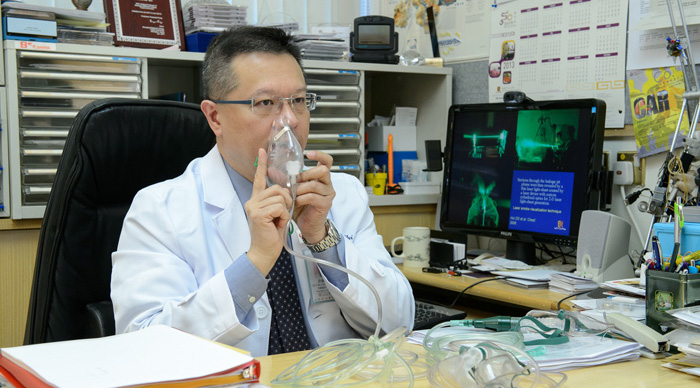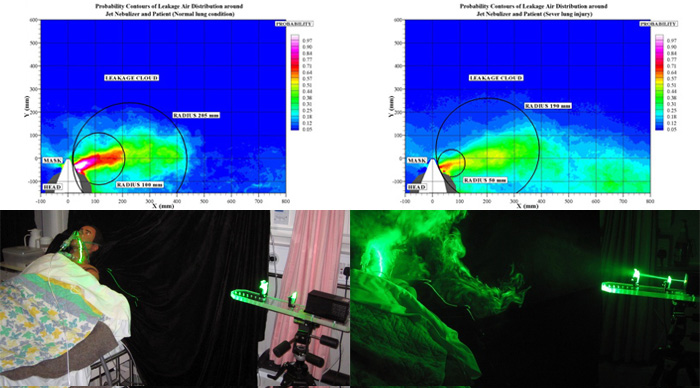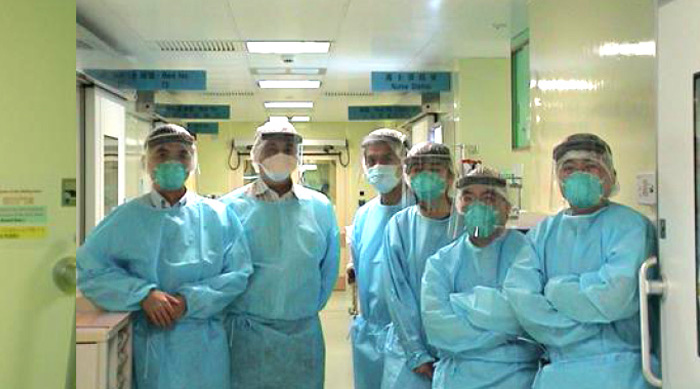Dear readers, With the launch of e-newsletter CUHK in Focus, CUHKUPDates has retired and this site will no longer be updated. To stay abreast of the University’s latest news, please go to https://focus.cuhk.edu.hk. Thank you.
Fighting Viral War with Improved Armoury

Ten years ago, a highly contagious and deadly SARS coronavirus epidemic struck Hong Kong without warning. With spontaneous Super Outbreaks in local hospitals, health care professionals fought the mysterious respiratory disease in the dark, risking their own lives while saving patients. Prof. Hui Shu-cheong David, Stanley Ho Professor of Respiratory Medicine of CUHK, was among one of those professionals.
Ten years on, Professor Hui still works relentlessly on researches to prevent the same crisis from happening again; including a study of potential leakage of exhaled air and aerosolized pathogen dispersion from different ventilation devices and respiratory masks. His research team undertook extensive studies on contamination risks during the use of oxygen masks and non-invasive assisted ventilation in patients. His works yielded many key findings and breakthroughs that help to minimize the risk of cross infection by redesigning hospital wards.
'In the aftermath of nosocomial "Super SARS Outbreaks" in local hospitals, we vowed to find out the root cause of cross infection.' In cooperation with Dr. Zhong Nanshan, China's leading SARS expert and a dozen of Guangzhou hospitals, the CUHK team analyzed more than 130 medical wards. The study concluded that the infection was highly correlated with the ward environment and design of certain medical devices, recalled Professor Hui.
'For instance, one of the key findings recommends the minimum distance between patient beds be widened to one meter to contain the spread of airborne contaminants. To prevent virus from contaminating adjacent areas, the study also proposes to accommodate high risk patients in "negative pressure" wards that only allow unidirectional fresh air inflow with collection of exhaled air from infected patients for disinfection treatment before discharging into the environment.'

The study also reveals that during the emergency treatment of patients requiring deployment of endotracheal intubation, oxygen masks or noninvasive assisted ventilation, potentially highly contagious droplets can be scattered around, which can substantially increase the exposure of hospital workers. For example, the operation of non-invasive assisted ventilation device may disperse aerosolized infectious pathogens into its surrounding area.
Inspired by the findings, Professor Hui decided to undertake an independent research project on the topic. With full support from CUHK, his team worked on a new oxygen mask design that can avoid leakage and dispersion of aerosolized pathogens.
"We used a human-patient simulator to simulate the exhalation from patients, with leakage jet plume revealed by a laser light-sheet captured into computer images to measure the airflow distance of potential aerosol leakage dispersed from different respiratory masks. It turned out all devices under study are subject to certain degree of air leakage! Subsequently, our team invented a new mask with full head coverage to protect the surrounding area from being contaminated by exhaled air. The team is still examining different safety aspects of the design. It is believed the new gear will be widely adopted in health care industry once endorsed."

Professor Hui also focuses on drug research for flu. "Tamiflu and Relenza are two antiviral drugs that work well against acute influenza. In general, Relenza is more effective on patients with minor symptoms while Tamiflu will be prescribed for more severe patients with pneumonia complications. Normally, Tamiflu is only available in pills. However, if the patient is unconscious or unable to swallow, a feeding tube will be inserted into the patient's stomach to administer liquefied Tamiflu. However, it would take as long as three hours for the drug to achieve the desired therapeutic effect."
Professor Hui and his research team are developing an injection drug equivalent to the effect of Tamiflu for optimal therapeutic effect. However, Professor Hui reiterates that the drug potency is still very much dependent on disease status. "The earlier the drug be administered to the patient, the better efficacy will be."
This article was originally published on CUHK Homepage in Jul 2013.